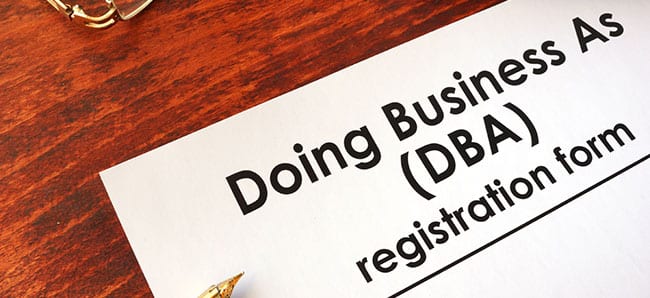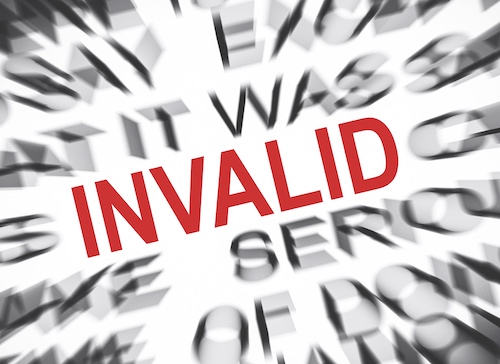Senior Circuit Judge Issues Split Decision on Patent Eligibility of Claims Directed to Restricting Access to Computer Files | Akin Gump Strauss Hauer & Feld LLP
Senior Circuit Judge Bryson of the Federal Circuit, sitting by designation in the District of Delaware, recently granted-in-part and denied-in-part a Rule 12(c) motion for judgment based on patent eligibility under 35 U.S.C. § 101. The patents are directed to restricting access to computer files. The court found certain claims eligible because they are directed to a problem arising in the realm of computers and they identify a specific improvement in computer capabilities. The court found other claims ineligible because they broadly recite generic steps and results and they were not limited to the technical advancement disclosed in the specification.
KOM Software Inc. v. NetApp, Inc., No. 18-cv-160-WCB (D. Del.).
KOM Software sued NetApp for infringing U.S. Patent Nos. 6,654,864 and 9,361,243. The patents are directed to restricting access to files contained within a computer data storage medium. Specifically, the patents disclose the implementation of a “trap layer” between the application layer and the file system layer of the computer system, which prevents a software application from passing invalid requests to the device drivers and returns an error message. Representative claim 5 of the ʼ864 patent recites a method of (1) providing an indication that one or more file operations is not permitted on a storage medium and (2) restricting access to each file based on that indication, while still allowing access to free space on the storage medium. The court construed representative claim 66 of the ʼ243 patent more narrowly because it expressly recited the use of the disclosed “trap layer” to intercept an attempted operation on the storage medium.
The court analyzed eligibility using the Supreme Court’s two-step Alice framework. In step one, a court determines whether the claims are “directed to a patent-ineligible concept,” such as an abstract idea. Alice Corp. v. CLS Bank Int’l, 573 U.S. 208, 217 (2014). If they are, the court proceeds to step two—the search for an “inventive concept”—and considers “the elements of each claim both individually and ‘as an ordered combination’ to determine whether the additional elements ‘transform the nature of the claim’ into a patent-eligible application.” Id. (citing Mayo Collaborative Servs. v. Prometheus Lab’ys, Inc., 566 U.S. 66, 78-79 (2012)).
Judge Bryson identified the following principles for determining whether claims are directed to an abstract idea that most directly apply to the computer-related application in this case: (1) methods of organizing human activity are abstract; (2) courts look to whether the claim recites an improvement in computer technology as opposed to simply using a computer to perform tasks in its ordinary capacity; (3) claims focused on collecting information, analyzing it and displaying results of the analysis are directed to an abstract idea; (4) for method claims, courts have focused on whether the claim is purely functional in nature or is sufficiently concrete or specific to be directed to a patent-eligible process rather than a patent-ineligible result; and (5) the concern that drives the judicial exceptions to patent eligibility is one of preemption—whether according patent protection to the claimed subject matter would have broad preemptive effect on future innovation in the same field.
The ’243 Patent
Addressing Alice step one for the ’243 patent, the court found that the focus of the claimed advance over the prior art is the use of a “trap layer,” which the specification discloses as the principal means for solving problems associated with prior art storage devices, and which is “expressly recited” in the claims. The court concluded that “the claims are plainly directed to an improvement in the functioning of the computer.” The court analogized the claims to those in TecSec, Inc. v. Adobe Inc., 978 F.3d 1278 (Fed. Cir. 2020), because (1) “the focus of the claimed advance was on a solution to a problem specifically arising the in the realm of … computers,” and (2) the claim was “properly characterized as identifying a specific improvement in computer capabilities …, rather than only claiming a desirable result or function.” The court recognized that the use of functional language in the claims may render the claims broad in scope, but it found that the character of the claims of the ʼ243 patent relates to a specific improvement in computer technology.
The ’864 Patent
Addressing Alice step one for the ’864 patent, the court concluded that the claims are directed to the abstract idea of restricting access to a storage device. The court reasoned that the claims were not limited to the “trap layer” in the specification and, instead, “cover essentially any method of restricting access to a storage device based on particular operation that are not permitted to be performed on the device.” The court found that the claims are directed to a “desirable result or function,” not to a “specific improvement in computer capabilities.”
Addressing Alice step two, the court recognized that patent eligibility can be determined at the pleading stage “only when there are no factual allegations that, taken as true, prevent resolving the eligibility question as a matter of law” and that the question of whether a claim recites an inventive concept is a question of fact. The court found, however, that KOM failed to allege what in the claims constitutes the inventive concept. The court explained that the movant NetApp bears the burden of proof on its motion, but when a defendant contends that the asserted claim lacks a plausible factual basis in the form of an inventive concept, the patent owner is required to respond with “plausible and specific factual allegations that aspects of the claims are inventive,” not just “conclusory allegations of inventiveness.”
KOM argued that the asserted claims “provide improvements over the prior art,” and that “[n]othing in the specification or prosecution history indicates that the combination of these limitations was conventional or well understood in the art.” The court found, however, that these allegations were “entirely conclusory.”
Practice Tip: In the computer arts, Patent Owners should focus the claims on solutions to problems specifically arising in the realm of computers and on improvements in computer capabilities. Patent Owners should avoid describing and claiming the advance over the prior art in purely functional terms in a result-oriented way that amounts to encompassing the abstract solution no matter how implemented. Instead, Patent Owners should describe and claim technical details for tangible components in the claimed system, including how the advance over the prior art is implemented. To overcome a challenge at the pleadings stage, Plaintiffs should include in the complaint allegations concerning the state of the prior art and the specific, unconventional claim limitations that address problems in the prior art.






